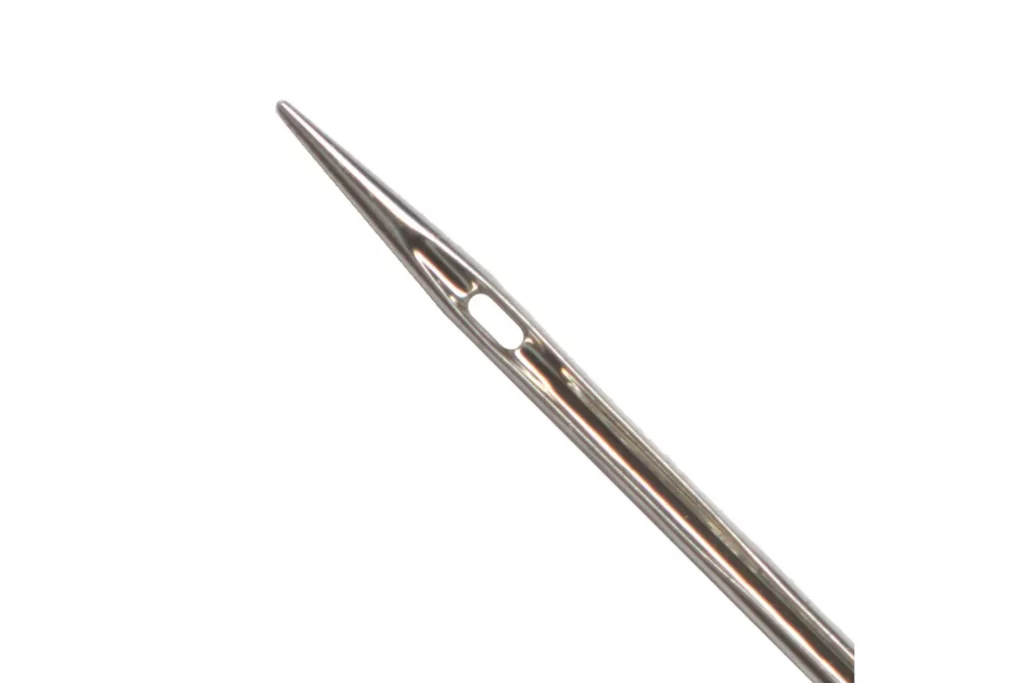Ballpoint needles are a specialized type of sewing machine needle that every seamstress and pattern maker should have in their toolkit. These needles are specifically designed for sewing knit fabrics, offering a rounded tip that prevents piercing and potential damage to the fabric. In this article, we will explore the significance of ballpoint needles, their benefits for sewing knit fabrics, and their role in ensuring successful and snag-free stitching.

What are “Ballpoint Needles”?
Ballpoint needles, also known as jersey needles, are engineered with a unique construction that sets them apart from regular sewing machine needles. The most distinctive feature is their rounded tip, which differs from the sharp point of standard needles. This rounded tip enables the needle to glide between the knit fabric’s fibers without causing snags or runs.
The Significance of Ballpoint Needles for Knit Fabrics
Knit fabrics, characterized by their stretch and flexibility, require special attention and the right tools for successful stitching. Here’s why ballpoint needles are vital for sewing knit fabrics:
- Preventing Fabric Damage: The rounded tip of ballpoint needles is designed to gently push aside the fabric’s fibers rather than piercing them. This prevents snags, runs, or any potential damage that could compromise the fabric’s integrity.
- Ensuring Smooth Stitching: As ballpoint needles navigate through knit fabrics, they minimize the risk of skipped stitches or uneven tension. The rounded tip allows the needle to move smoothly between the fabric’s fibers, resulting in even and consistent stitching.
- Preserving Fabric Stretch: Knit fabrics derive their stretch from their interlocking fibers. By using ballpoint needles, you ensure that the fabric’s stretch and recovery properties are maintained, as the rounded tip avoids cutting or breaking the fibers during sewing.
Suitable Applications for Ballpoint Needles
Ballpoint needles are particularly well-suited for a range of knit fabric applications. Some common examples include:
- Garment Construction: Whether sewing a basic T-shirt, a cozy sweater, or activewear, ballpoint needles are essential for constructing seams, hems, and necklines on knit garments. They provide the necessary precision and care to handle the delicate nature of knit fabrics.
- Elastic Insertion: When working with elastic materials, such as waistbands or cuffs, ballpoint needles ensure secure and comfortable insertions. Their rounded tip avoids piercing the elastic fibers, allowing them to maintain their elasticity and functionality.
- Decorative Stitching: Ballpoint needles can also be used for decorative stitching on knit fabrics. Whether adding topstitching, decorative accents, or appliqué, these needles prevent any unintended damage or distortion to the fabric surface.
Needle Size Considerations
When selecting ballpoint needles, it is important to consider the appropriate needle size based on the weight and thickness of your knit fabric. The needle size should match the fabric’s density to ensure optimal performance and prevent any fabric damage or needle breakage.
Conclusion
Ballpoint needles are a seamstress’s essential tool for successful and snag-free sewing of knit fabrics. Their rounded tip preserves the fabric’s integrity, enables smooth stitching, and maintains the fabric’s stretch and recovery properties. By using ballpoint needles, you can confidently tackle knit fabric projects, from garments to decorative stitching, with precision and care. Embrace the significance of ballpoint needles, select the appropriate needle size, and unlock the full potential of your knit fabric sewing endeavors.



